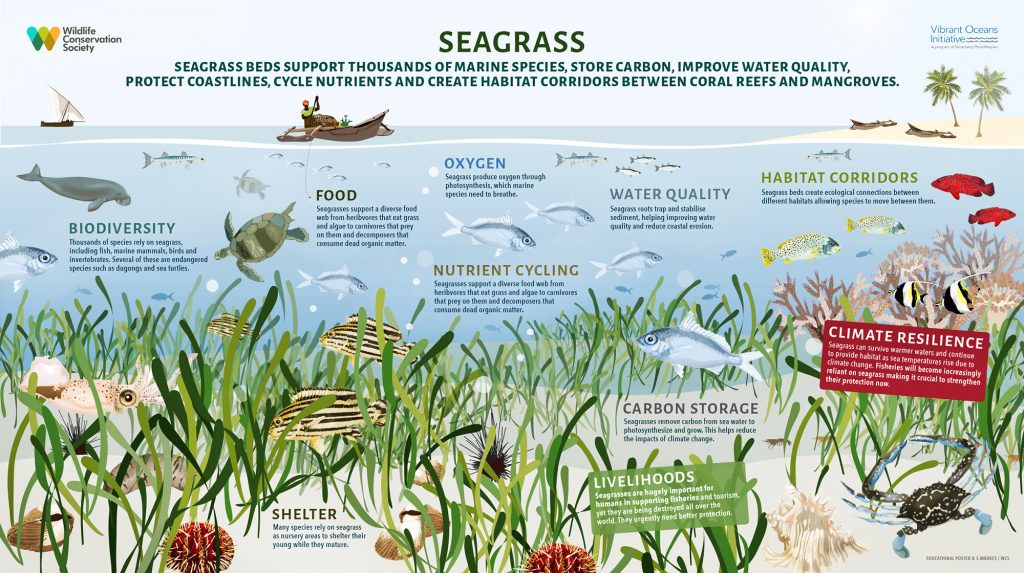
November 1, 2021
The Importance of Seagrass
- as seen by -
 Sarah Markes and Tim Davenport
@WCS_Tanzania
Sarah Markes and Tim Davenport
@WCS_Tanzania Although not as well-known as tropical forests or coral reefs, seagrass meadows are among the most productive and important ecosystems in the world. Found globally in shallow salty and brackish waters, seagrasses are marine flowering plants that support thousands of key species and essential ecosystem functions.
Sometimes referred to as the “lungs of the sea”, seagrasses photosynthesize to create energy and grow, absorbing carbon from the water and generating oxygen in the process. In addition to storing carbon in their leaves and roots, seagrasses also trap decaying organic matter and silt, creating carbon rich sediments – making them very effective carbon sinks. It has been estimated that one acre of seagrass sequesters 74 pounds of carbon per year (83 grams per sq meter per year) – the same amount emitted by a car traveling 3,860 miles (6,212 km). Their role in mitigating the effects of human-induced climate change, therefore, is significant.
Seagrass beds are vital to an immense diversity of marine life – from fish to crustaceans, turtles to dugongs, sea cucumbers to sea urchins. Some of these species are permanent residents, while others are only temporary visitors, but each are reliant on seagrass either for food, shelter, breeding, nursery areas, or habitat corridors between other ecosystems such as reefs and mangroves.
Millions of people’s livelihoods and well-being are directly reliant on seagrass – through fisheries, marine tourism, and coastal protection from storms. Yet sadly, the all too familiar tale – seagrasses are in trouble. Over a quarter of global seagrass has been lost in the past century. Threats include destructive fishing practices such as drag-nets, water pollution from industry, sewage, fertilizers and domestic waste, habitat destruction from coastal development, and dredging and ecosystem imbalance caused by overfishing. Rising sea water temperatures also influence seagrass growth and disease susceptibility, although research shows they are more resilient to warming waters than other marine ecosystems. Fisheries in many areas will become more dependent on seagrass as the impacts of climate change intensify.
We created this educational graphic to highlight the value and importance of seagrass ecosystems. Please email sarahindar@gmail.com for a print resolution copy.
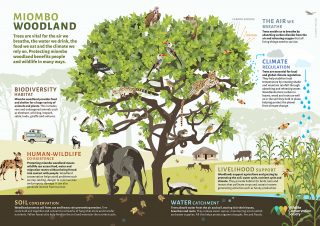
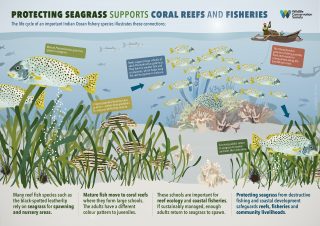
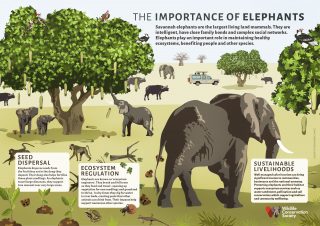
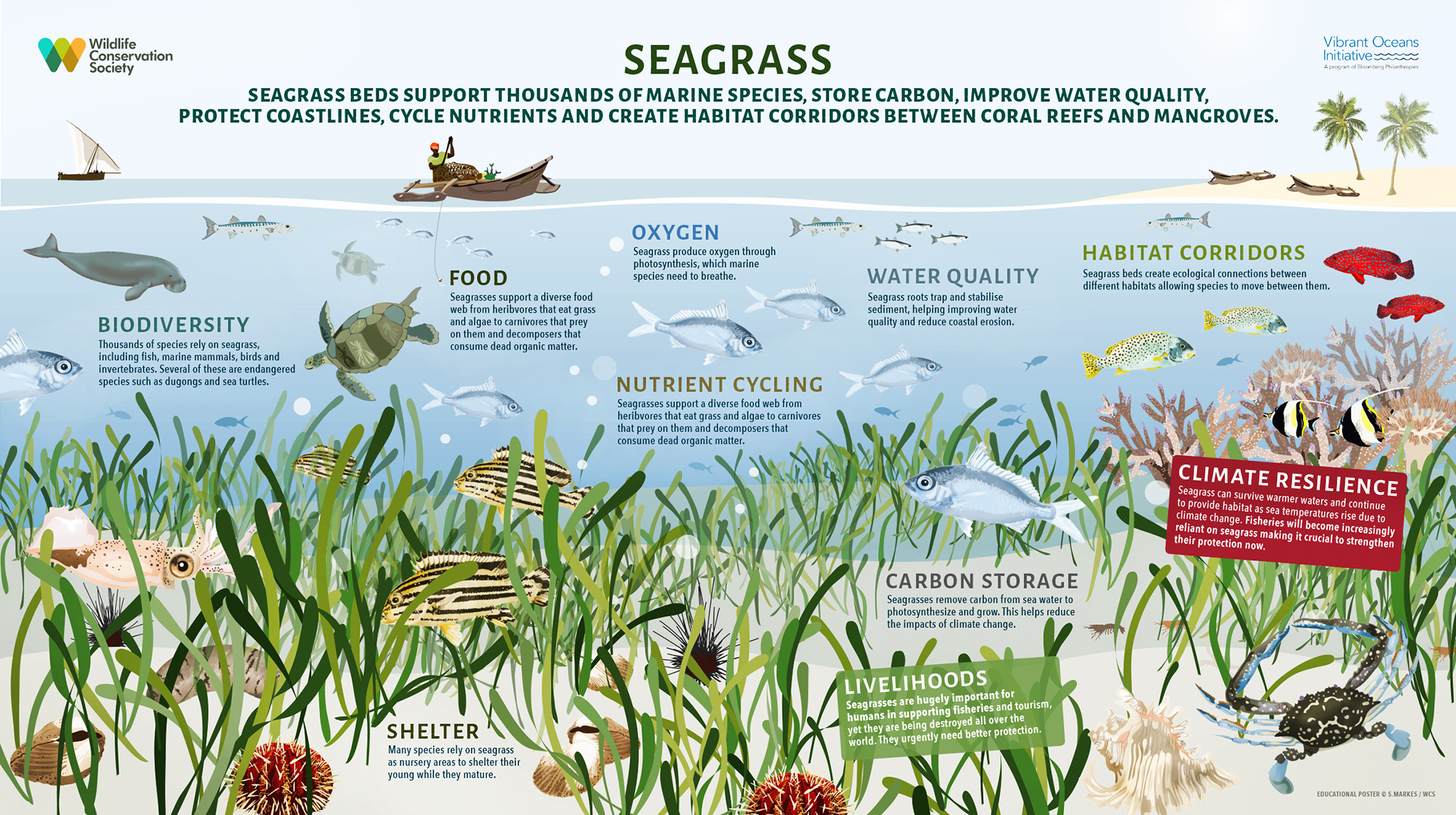
Leave a Comment
Pingback: Malaysian Ecologist Jillian Ooi Receives US$150,000 Pew Grant To Save Local Seagrass Meadows - Daily Post Studio
Terence Bulley
April 6, 2022 at 6:15 am
We love your work.
Pingback: Coastal Regeneration • by Brandon Corcoran – What is sustainability?
Pingback: Coastal Regeneration • by Brandon Corcoran – Tv Aulnes